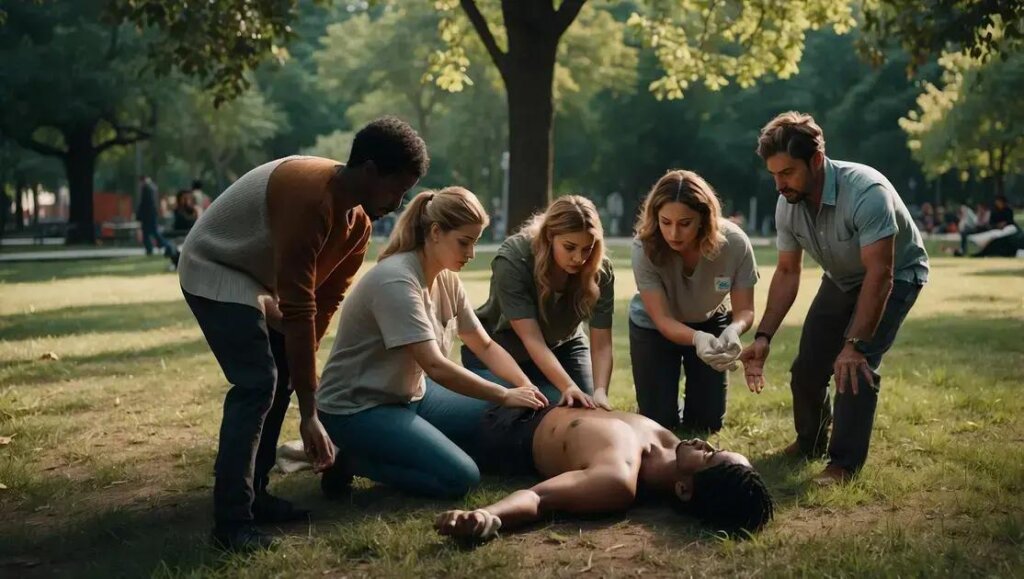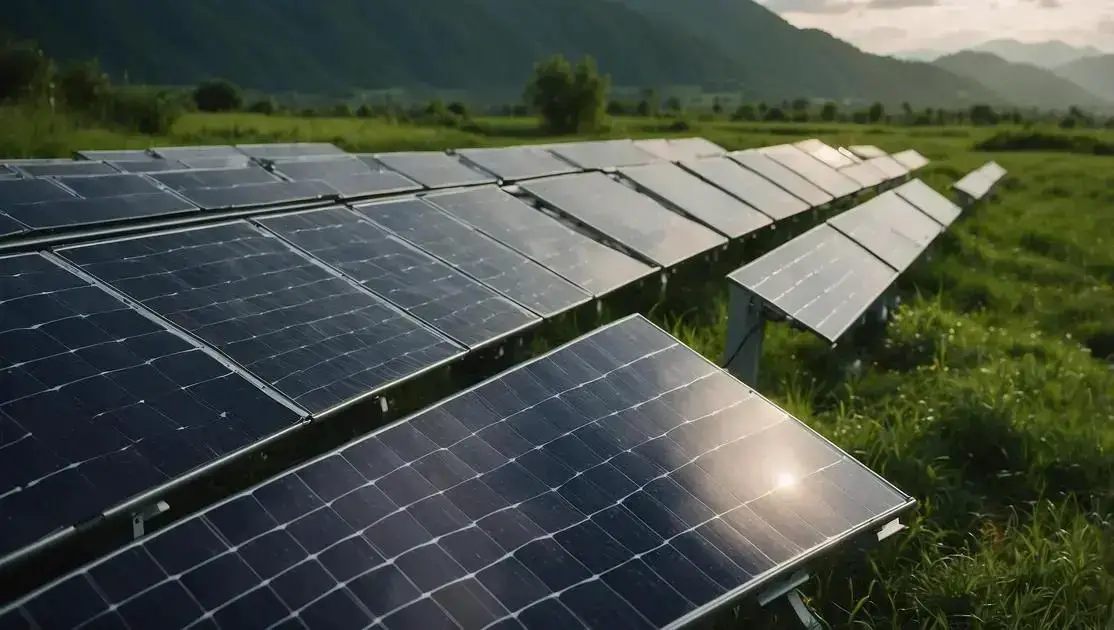First Aid Skills are crucial for everyone, from parents to professionals. Knowing basic **first aid** can make a significant difference in emergencies. Whether you encounter a medical crisis at home or in public, being prepared with essential techniques can help save lives. This article will guide you through the key skills needed to respond effectively, including CPR and dealing with injuries. Equip yourself with knowledge that empowers you to act confidently and calmly when it matters most.
Table of Contents
ToggleEssential First Aid Skills Everyone Should Know
Being prepared with essential first aid skills is crucial for everyone, especially during emergencies like solar storms, when potential chaos can arise. Knowing how to manage situations calmly can be the difference between life and death.
Recognizing Emergencies
First, understand how to recognize an emergency. If someone is seriously injured or unresponsive, you should act quickly. Stay calm, and assess the situation before intervening.
Basic First Aid Skills
Here are some basic first aid skills everyone should know:
- CPR (Cardiopulmonary Resuscitation): A vital skill that can save lives during a cardiac arrest.
- Choking Assistance: Knowing how to perform the Heimlich maneuver can help someone who is choking.
- Wound Care: Treatment for cuts and scrapes can prevent infections.
- Burn Care: Understanding how to treat burns correctly can relieve pain and promote healing.
- Allergic Reactions: Recognizing signs and knowing how to use an EpiPen is essential for severe allergies.
- Managing Sprains and Strains: Proper techniques can alleviate pain and prevent further injury.
Training and Practice
Consider taking a certified first aid course to practice these skills. Regular CPR training, for example, ensures that you will feel confident in an emergency.
Stay Informed
Keep yourself updated with local emergency numbers and resources. Know where to find your first aid kit and ensure it is fully stocked. Regularly check expiration dates on supplies and replace items as needed.
Understanding CPR and Its Importance
CPR, or cardiopulmonary resuscitation, is a life-saving technique that anyone can learn. It is especially important to know during emergencies like solar storms when access to medical help may be delayed.
What is CPR?
CPR combines chest compressions and rescue breaths to keep blood flowing and supply oxygen to someone who is not breathing or whose heart has stopped. This technique is crucial in keeping vital organs alive until professional help arrives.
Why is CPR important?
Having the ability to perform CPR increases a person’s chances of surviving a cardiac arrest significantly. According to the American Heart Association, immediate CPR can double or triple a victim’s chance of survival. During a crisis, knowing how to perform CPR effectively can save a life.
How to Perform CPR
Performing CPR involves the following steps:
- Check for Responsiveness: Tap the person and shout to see if they respond.
- Call for Help: If they are unresponsive, call 911 or have someone else do it.
- Open the Airway: Tilt the person’s head back slightly to open the airway.
- Check for Breathing: Look, listen, and feel for breathing for no more than 10 seconds.
- Start Chest Compressions: Place your hands in the center of the chest and push hard and fast, allowing the chest to rise fully between compressions.
- Rescue Breaths: After every 30 compressions, give 2 rescue breaths if trained to do so.
Take a CPR Course
Learning CPR from a certified instructor is highly recommended. Practical training helps reinforce proper techniques and builds the confidence needed to act in emergencies.
Know When to Use CPR
You should use CPR when someone shows signs of cardiac arrest, such as being unresponsive or not breathing. Be ready to start CPR immediately to increase the victim’s chances of survival.
Managing Choking Incidents Effectively
Choking can happen quickly and can be life-threatening. Knowing how to manage choking incidents effectively is a vital skill, especially during emergencies like solar storms.
Recognizing Choking
Signs of choking include the person being unable to speak, difficulty breathing, gagging, or clutching their throat. If you see these signs, act immediately.
Act Fast
Time is crucial when someone is choking. If they cannot cough or breathe, you need to perform the Heimlich maneuver immediately. Here’s how to do it:
How to Perform the Heimlich Maneuver
- Stand Behind the Person: Wrap your arms around their waist.
- Make a Fist: Place your fist just above their navel.
- Thrust Upward: Grab your fist with the other hand and perform quick, upward thrusts until the object is dislodged.
For Children and Infants
It is essential to adjust your approach for children and infants:
- For Children: Use the Heimlich maneuver as you would for adults, but be gentle and use less force.
- For Infants: Hold the baby face down on your forearm, and give five back blows between the shoulder blades using the heel of your hand. If that doesn’t work, turn them over and give five chest thrusts.
When to Call for Help
If the person becomes unconscious or if you are unable to help them, call 911 right away. Keep trying to assist until help arrives.
Prevention
Educate others about the risks of choking. Chew food thoroughly, and avoid talking or laughing while eating to minimize the chances of an incident.
Dealing with Cuts and Scrapes
Cuts and scrapes are common injuries that can happen anywhere, especially during emergencies like solar storms when people may be more active or stressed. Knowing how to deal with them effectively is essential.
Assess the Injury
First, assess the severity of the cut or scrape. If it is deep or bleeding heavily, call for medical help immediately. For minor cuts or scrapes, you can treat them at home.
Steps to Treat Cuts and Scrapes
Follow these steps to treat a cut or scrape:
- Wash Your Hands: Before touching the wound, clean your hands with soap and water or use hand sanitizer.
- Stop the Bleeding: Apply gentle pressure with a clean cloth or bandage until the bleeding stops.
- Clean the Wound: Rinse the cut or scrape gently under running water to remove dirt and debris. Avoid using strong antiseptics like hydrogen peroxide, as they can damage the tissue.
- Apply Antibiotic Ointment: Use an over-the-counter antibiotic ointment to help prevent infection.
- Cover the Wound: Use a sterile bandage or gauze to cover the wound. Change the bandage daily or if it becomes wet or dirty.
When to Seek Medical Attention
You should seek medical attention if:
- The cut is deep or won’t stop bleeding.
- You see signs of infection, such as increased redness, swelling, or pus.
- The injury was caused by a dirty or rusty object, as you may need a tetanus shot.
Keep an Eye on Healing
Monitor the wound as it heals. If you notice any unusual changes or if it does not improve within a few days, consult a healthcare professional.
First Aid for Burns: What to Do
Burns can occur easily, especially during emergencies like solar storms when people may be using candles, cooking, or working with tools. Knowing how to treat burns is an important first aid skill.
Types of Burns
Burns are categorized into three main types:
- First-Degree Burns: Affect only the outer layer of skin, causing redness and minor pain.
- Second-Degree Burns: Affect both the outer layer and the underlying layer, leading to blisters and more severe pain.
- Third-Degree Burns: Damage deeper tissues, causing white, charred skin and numbness due to nerve damage.
What to Do for Burns
Here’s how to treat different types of burns:
First-Degree Burns
For minor burns:
- Cool the Burn: Hold the burned area under cool (not cold) running water for 10 to 20 minutes.
- Cover the Area: Use a non-stick, sterile bandage to protect the area from irritation.
- Pain Management: Take over-the-counter pain relievers like ibuprofen or acetaminophen to ease discomfort.
Second-Degree Burns
For second-degree burns:
- Cool the Burn: Similar to first-degree burns, run cool water over the affected area.
- Do Not Pop Blisters: Cover the burn with a clean, dry bandage. Popping blisters can lead to infection.
- Seek Medical Attention: If the burn is larger than three inches or covers the face, hands, or joints, see a doctor.
Third-Degree Burns
For third-degree burns:
- Call 911 Immediately: This type of burn requires professional medical treatment.
- Do Not Immerse in Water: Avoid putting ice or cool water on severe burns as it can worsen the injury.
- Cover with a Clean Cloth: Use a sterile cloth to cover the wound while waiting for medical assistance.
Prevention Tips
To prevent burns, be cautious when handling hot objects, use appropriate protective gear, and keep flammable materials away from heat sources.
Responding to Allergic Reactions
Allergic reactions can happen quickly and may vary from mild to severe. Knowing how to respond effectively is vital, especially during emergencies like solar storms when help may be delayed.
Recognizing Symptoms
Common symptoms of allergic reactions include:
- Itching or Irritation: Itching around the eyes or skin.
- Hives: Raised, red bumps on the skin.
- Swelling: Swelling of the face, lips, or throat.
- Breathing Difficulties: Wheezing or trouble breathing.
- Gastrointestinal Symptoms: Nausea, vomiting, or diarrhea.
Steps to Take for Mild Reactions
If someone experiences mild allergic symptoms:
- Identify the Allergen: Try to determine what caused the reaction and remove it, if possible.
- Administer Antihistamines: Over-the-counter antihistamines can help relieve mild symptoms like itching and hives.
- Monitor the Person: Keep a close watch for any worsening of symptoms.
Responding to Severe Reactions
For severe allergic reactions (anaphylaxis), take these steps:
- Call 911: If you suspect anaphylaxis, call for emergency help immediately.
- Use an EpiPen: If the person has a prescribed epinephrine auto-injector (EpiPen), administer it immediately. Follow the instructions provided.
- Keep the Person Calm: Encourage them to remain calm and keep them lying down if they feel faint.
When to Seek Medical Attention
Even if symptoms seem to improve after using an EpiPen, medical attention is necessary. Remaining monitored by professionals can prevent complications.
Prevention Tips
To avoid allergic reactions, be aware of known allergies and carry antihistamines or an EpiPen when necessary. Always inform others of your allergies during group activities.
Treating Sprains and Strains at Home
Sprains and strains are common injuries that can occur during physical activities. Knowing how to treat them at home is crucial, especially during emergencies when professional help may be delayed.
Understanding Sprains and Strains
A sprain is an injury to a ligament, while a strain is an injury to a muscle or tendon. Both can cause pain, swelling, and difficulty moving the affected area.
Steps to Treat Sprains and Strains
Follow these steps to treat sprains and strains at home:
- Rest: Stop the activity that caused the injury and avoid putting weight on the affected area.
- Ice: Apply ice wrapped in a cloth to the injured area for 15-20 minutes every hour. This helps reduce swelling.
- Compression: Use an elastic bandage to compress the area gently. This can help control swelling but does not cut off circulation.
- Elevation: Keep the injured area elevated above the level of your heart when possible. This can also help decrease swelling.
Pain Management
Over-the-counter pain relievers such as ibuprofen or acetaminophen can help manage pain and reduce inflammation. Follow the dosage instructions on the package.
When to Seek Medical Attention
You should seek medical attention if:
- The pain is severe or doesn’t improve with home treatment.
- You cannot use the injured area after a few days.
- You notice significant swelling or bruising.
- You suspect a fracture.
Recovery Tips
Incorporate gentle stretching and strengthening exercises as recommended by a healthcare professional once the pain starts to subside. Gradually return to activities to prevent re-injury.
Recognizing Signs of a Heart Attack
Recognizing the signs of a heart attack is crucial for timely intervention. During emergencies like solar storms, quick action can be lifesaving. Here are the key symptoms to watch for:
Common Signs of a Heart Attack
- Chest Discomfort: This may feel like pressure, squeezing, fullness, or pain. It can last for more than a few minutes or go away and come back.
- Pain in Other Areas: Discomfort may also be felt in one or both arms, the back, neck, jaw, or stomach.
- Shortness of Breath: This can occur with or without chest discomfort. It may happen while resting or during physical activity.
- Cold Sweat: Breaking out in a sweat for no apparent reason can be a warning sign.
- Nausea or Light-headedness: Feeling sick to your stomach or dizzy can also indicate a heart attack.
Differences in Symptoms
It’s important to note that symptoms can differ between men and women. Women may experience more subtler signs, such as fatigue, indigestion, or anxiety.
What to Do If You Suspect a Heart Attack
If you or someone else shows these symptoms:
- Call 911: Get emergency help immediately.
- Stay Calm: Try to remain as calm as possible while waiting for help.
- Avoid Physical Activity: Do not exert yourself; sit or lie down until help arrives.
Prevention Strategies
To reduce the risk of a heart attack, maintain a healthy diet, exercise regularly, avoid smoking, and manage stress levels.
How to Use an AED Correctly
Using an Automated External Defibrillator (AED) correctly can save a life during a cardiac emergency. Here’s how to use one properly:
Steps to Use an AED
- Call for Help: Before using the AED, call 911 or have someone else do it.
- Turn on the AED: Open the device and turn it on. Most models will give you audio and visual instructions.
- Expose the Chest: Remove any clothing or jewelry covering the person’s chest and ensure it is dry.
- Attach the Pads: Place the pads on the bare chest as shown in the diagrams on the pads. One pad goes on the upper right side of the chest, and the other pad goes on the lower left side.
- Stand Clear: Make sure no one is touching the person, and take a step back.
- Allow the AED to Analyze: The AED will assess the heart rhythm. If a shock is advised, it will prompt you to take action.
- Deliver the Shock: Press the shock button if instructed. Ensure everyone is clear of the person before doing so.
- Continue CPR: After the shock, start CPR immediately. Continue until emergency help arrives or the person shows signs of life.
Important Safety Tips
- Do not use the AED in wet areas, as this can pose a safety hazard.
- Make sure the pads do not touch each other when placed on the chest.
- If the person has a pacemaker or implanted defibrillator, place the pads at least one inch away from these devices.
Maintain the AED
Regularly check your AED to ensure it is in good working order. Make sure the pads are not expired, and the battery is charged.
Essential First Aid Kits for Home
Having an essential first aid kit at home is vital for handling emergencies, especially during situations like solar storms. You should be prepared for minor injuries and illnesses. Here’s what to include in your kit:
Basic Supplies
- Adhesive Bandages: Various sizes for covering small cuts and scrapes.
- Gauze Pads: For larger wounds, along with adhesive tape to hold them in place.
- Antiseptic Wipes: To clean wounds before dressing them to prevent infection.
- Antibiotic Ointment: To apply on cuts and scrapes after cleaning.
- Medical Gloves: Disposable gloves to protect yourself and others while treating injuries.
Pain Relief Medications
Include over-the-counter pain relievers such as:
- Ibuprofen: For reducing pain and inflammation.
- Acetaminophen: For pain relief and fever reduction.
Emergency Items
- Thermometer: For checking temperature in case of fever.
- Elastic Bandage: For wrapping sprains or strains to provide support.
- Instant Cold Packs: To reduce swelling and relieve pain.
Specialized Products
Depending on your family’s needs, you might also want to include:
- Allergy Medication: Antihistamines for allergic reactions.
- Emergency Rescue Blanket: To manage shock or keep warm.
Organize Your First Aid Kit
Store all items in a clear, waterproof container that is easy to access. Regularly check and replace expired items.
Preparing for Emergencies with First Aid Skills
Being equipped with essential first aid skills can make a significant difference during emergencies, especially in situations like solar storms. Recognizing signs of heart attacks, knowing how to use an AED, and having an organized first aid kit at home are all integral parts of effective emergency response.
From treating cuts and scrapes to managing allergic reactions and sprains, the knowledge and resources you gather will empower you to act confidently. Regular training and awareness of first aid techniques will ensure that you, your family, and those around you can respond quickly and efficiently when it matters most.
Therefore, prioritize first aid education and preparedness to safeguard your loved ones during emergencies.
FAQ – Frequently Asked Questions about First Aid Skills
What should I include in my home first aid kit?
Your home first aid kit should include adhesive bandages, gauze pads, antiseptic wipes, antibiotic ointment, pain relief medications, and any specialized items relevant to your family’s needs.
How do I recognize the signs of a heart attack?
Common signs include chest discomfort, pain in other areas such as arms or jaw, shortness of breath, cold sweat, and nausea or light-headedness. If you suspect a heart attack, call 911 immediately.
When should I use an AED?
Use an AED when a person is unresponsive and not breathing. Always call for emergency help first before using the device.
What is the importance of CPR?
CPR is vital as it can double or triple a victim’s chances of survival during a cardiac arrest. It helps maintain blood flow to the brain and vital organs until professional help arrives.
How can I treat minor cuts and scrapes?
For minor cuts and scrapes, clean the area with antiseptic, apply antibiotic ointment, and cover with a sterile bandage.
What should I do if someone is having an allergic reaction?
If someone is having a mild allergic reaction, remove the allergen and administer antihistamines. For severe reactions (anaphylaxis), use an EpiPen and call 911 immediately.











